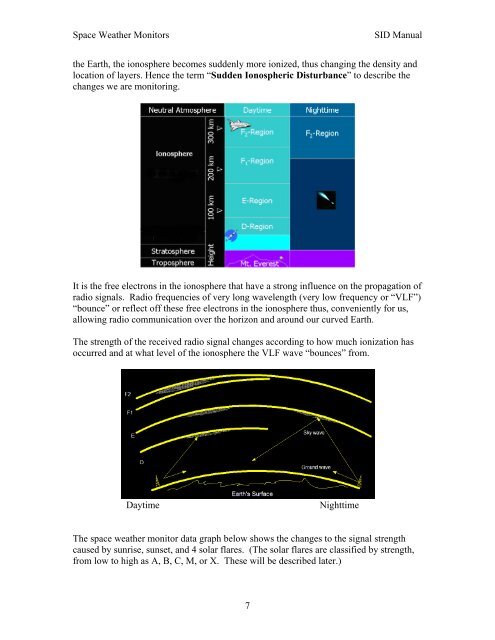Space Weather Monitors SID Users Manual - Stanford Solar Center ...
Space Weather Monitors SID Users Manual - Stanford Solar Center ...
Space Weather Monitors SID Users Manual - Stanford Solar Center ...
You also want an ePaper? Increase the reach of your titles
YUMPU automatically turns print PDFs into web optimized ePapers that Google loves.
<strong>Space</strong> <strong>Weather</strong> <strong>Monitors</strong> <strong>SID</strong> <strong>Manual</strong><br />
the Earth, the ionosphere becomes suddenly more ionized, thus changing the density and<br />
location of layers. Hence the term “Sudden Ionospheric Disturbance” to describe the<br />
changes we are monitoring.<br />
It is the free electrons in the ionosphere that have a strong influence on the propagation of<br />
radio signals. Radio frequencies of very long wavelength (very low frequency or “VLF”)<br />
“bounce” or reflect off these free electrons in the ionosphere thus, conveniently for us,<br />
allowing radio communication over the horizon and around our curved Earth.<br />
The strength of the received radio signal changes according to how much ionization has<br />
occurred and at what level of the ionosphere the VLF wave “bounces” from.<br />
Daytime Nighttime<br />
The space weather monitor data graph below shows the changes to the signal strength<br />
caused by sunrise, sunset, and 4 solar flares. (The solar flares are classified by strength,<br />
from low to high as A, B, C, M, or X. These will be described later.)<br />
7



